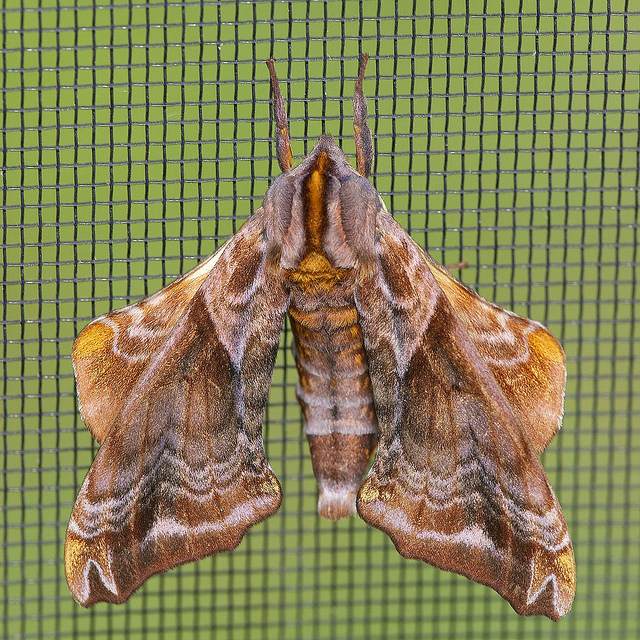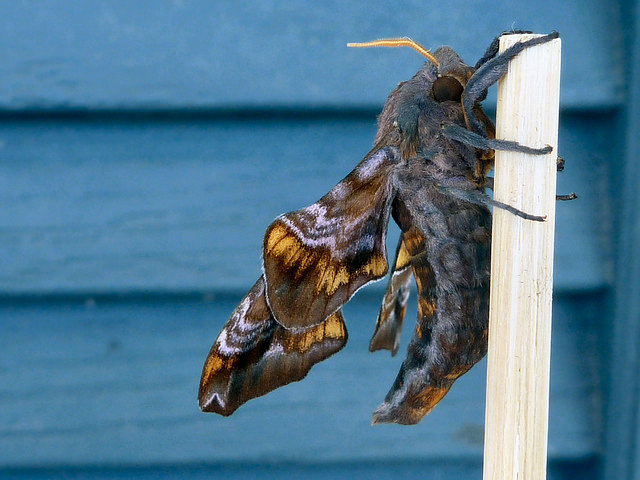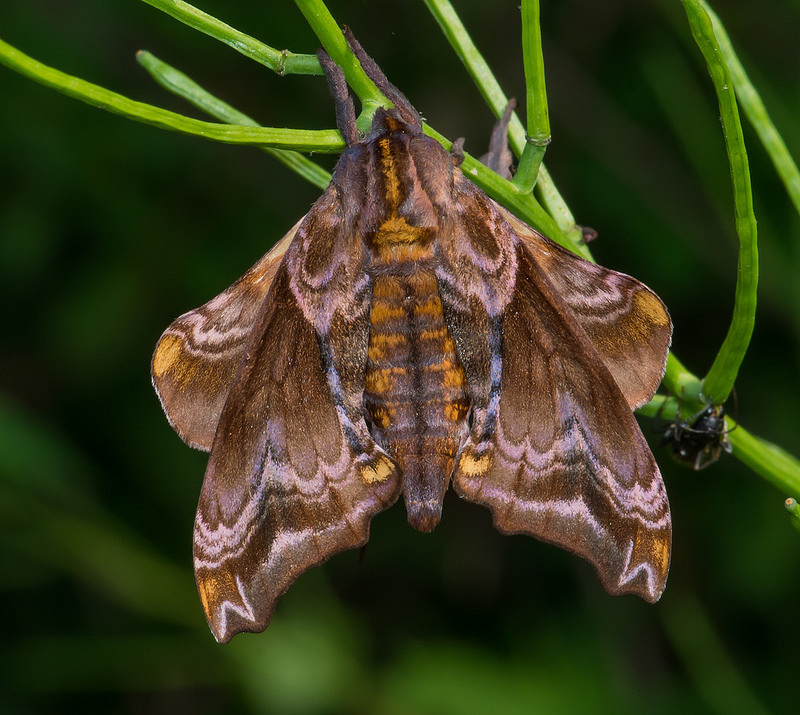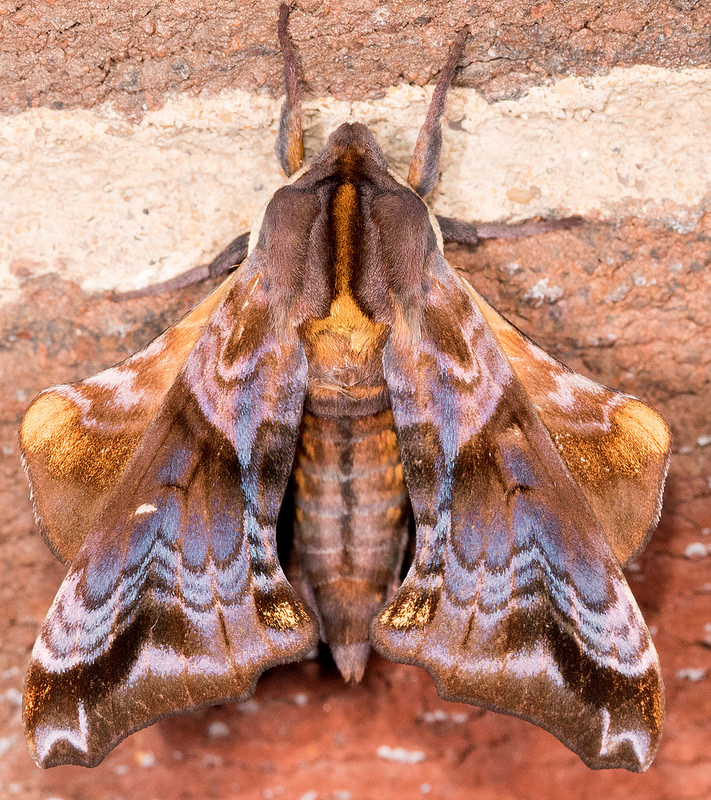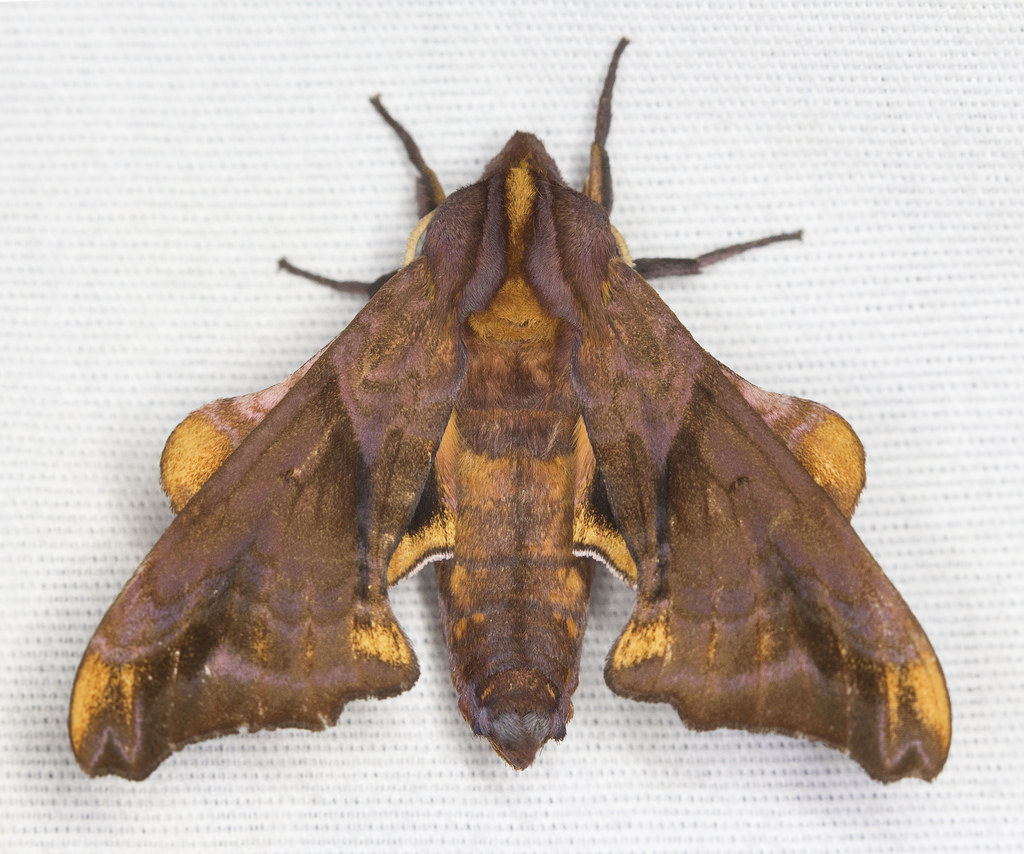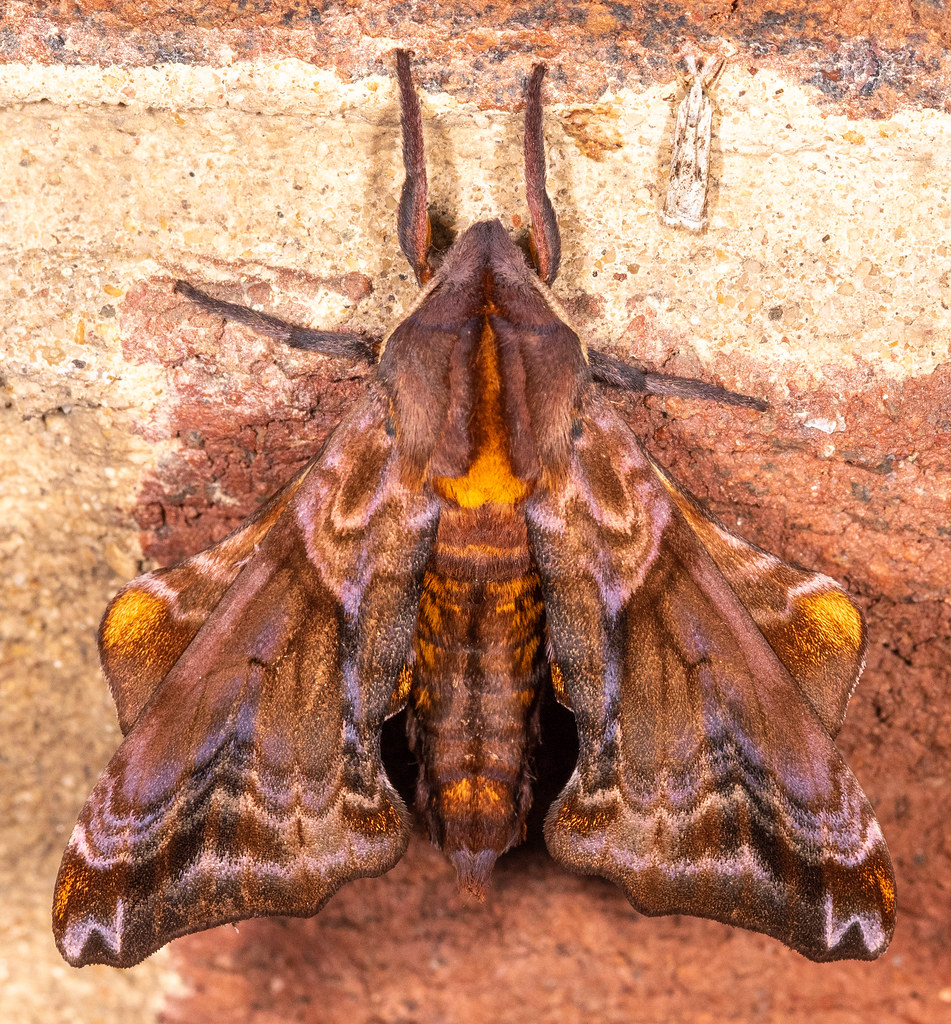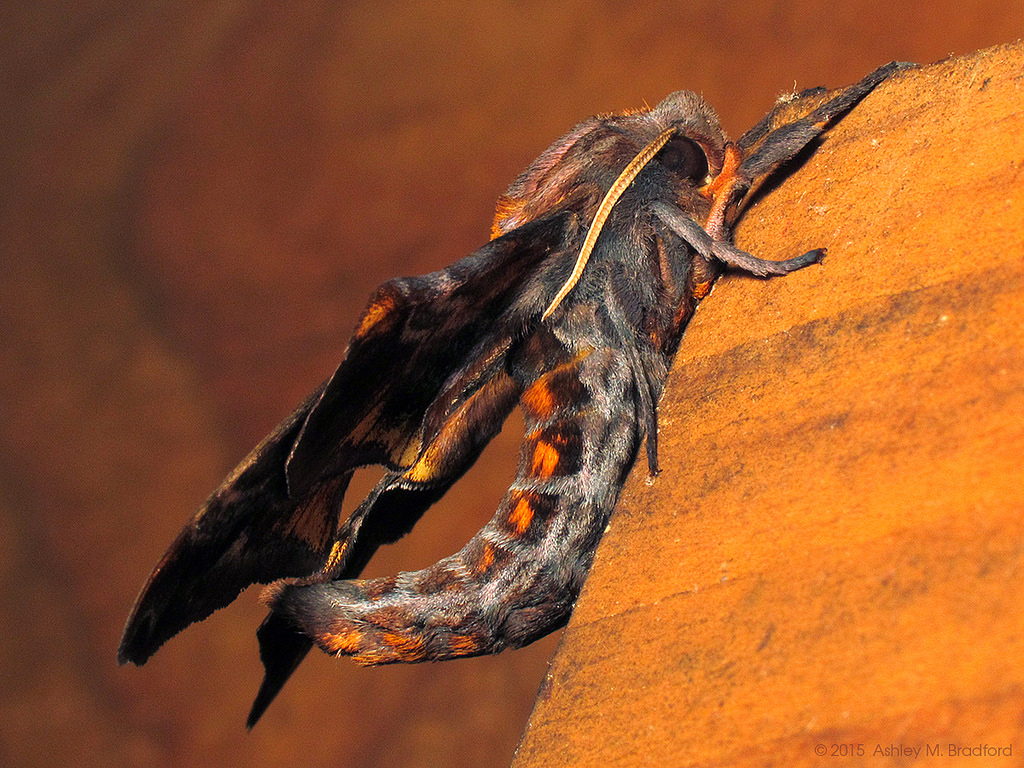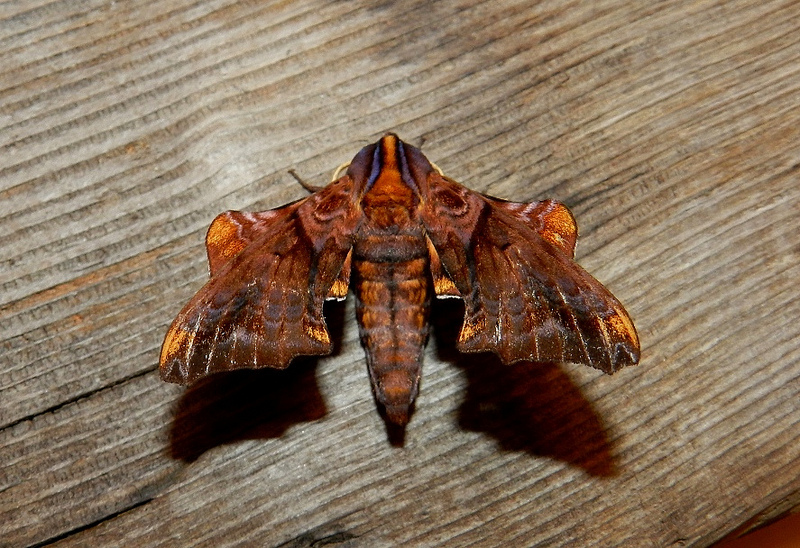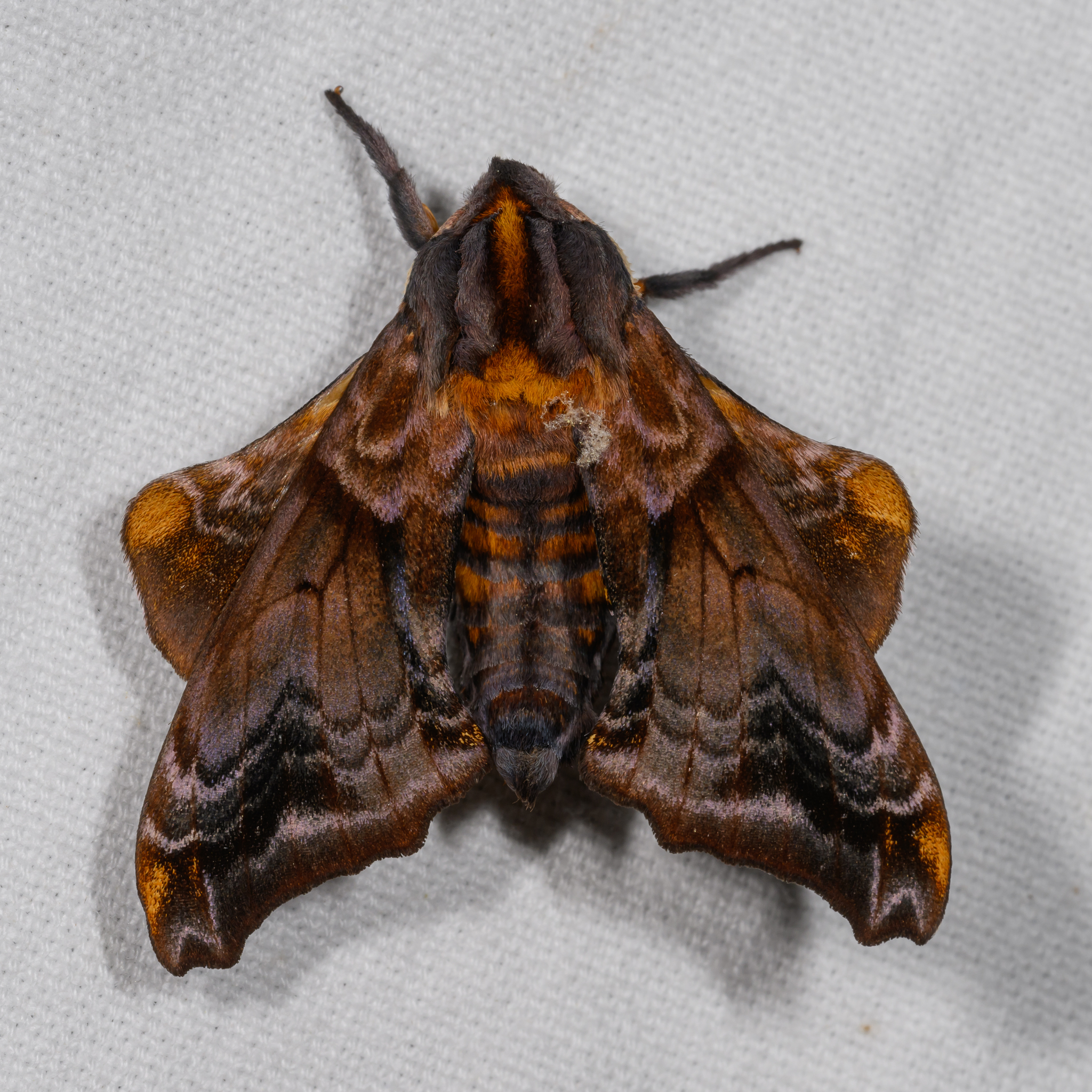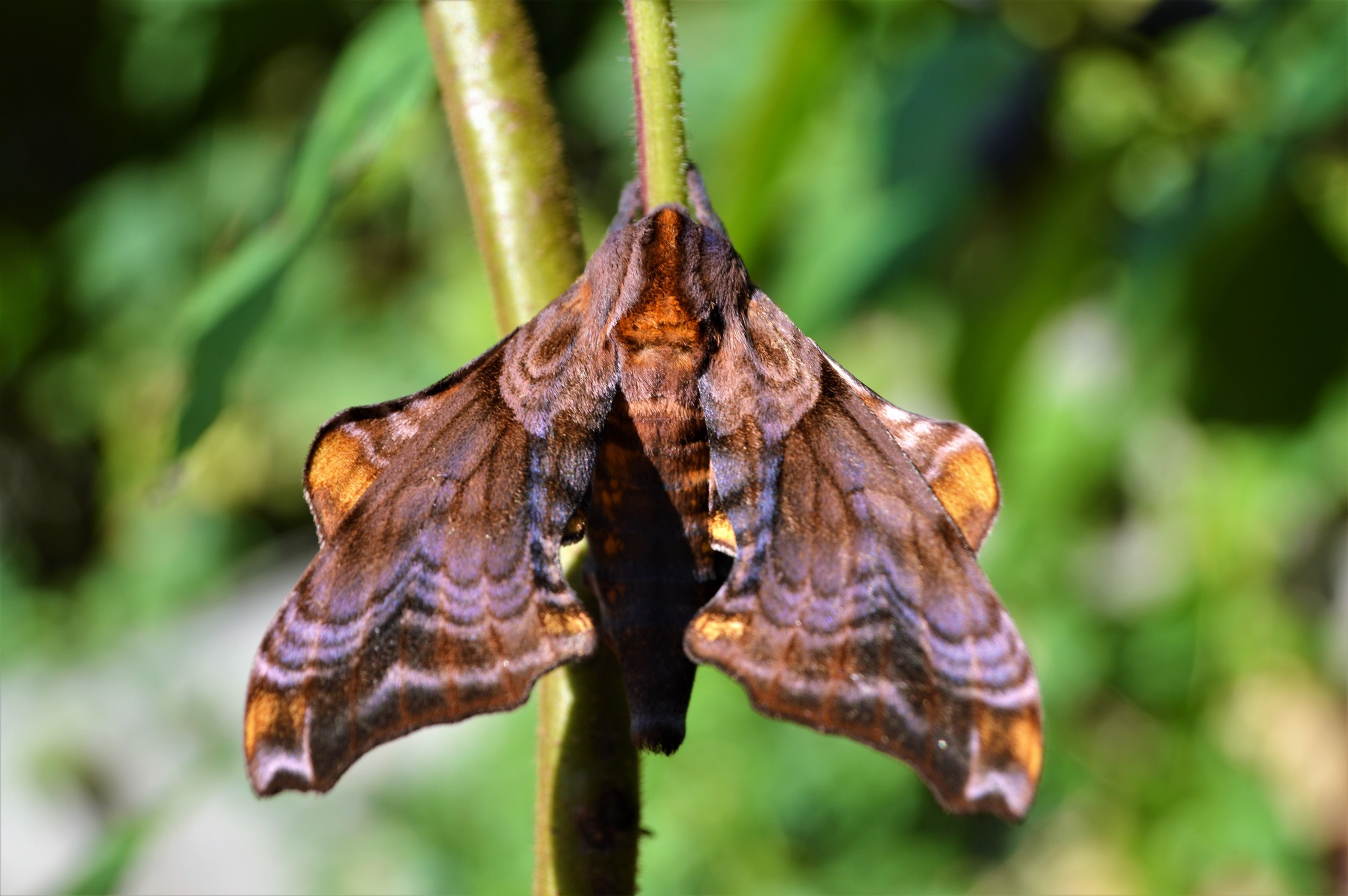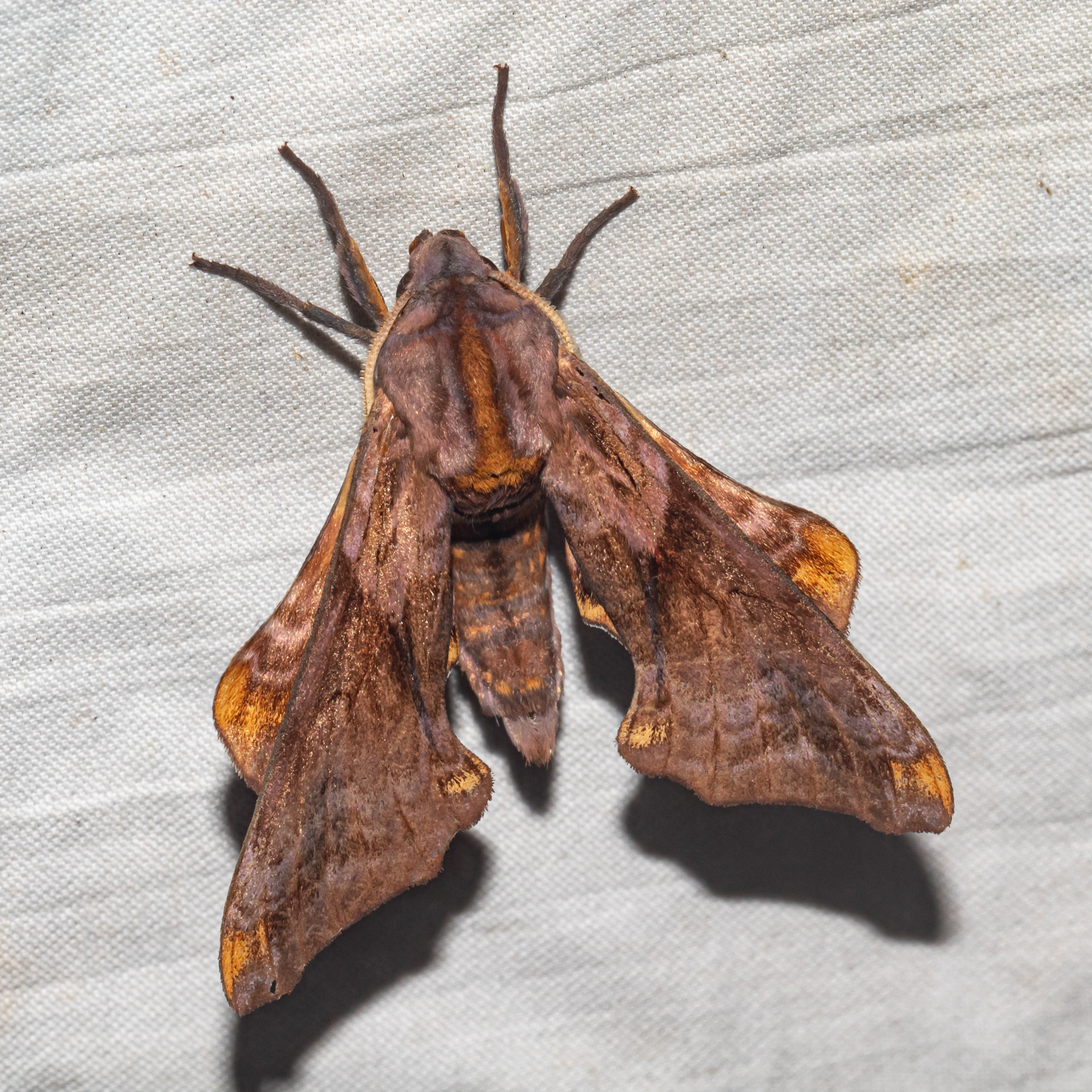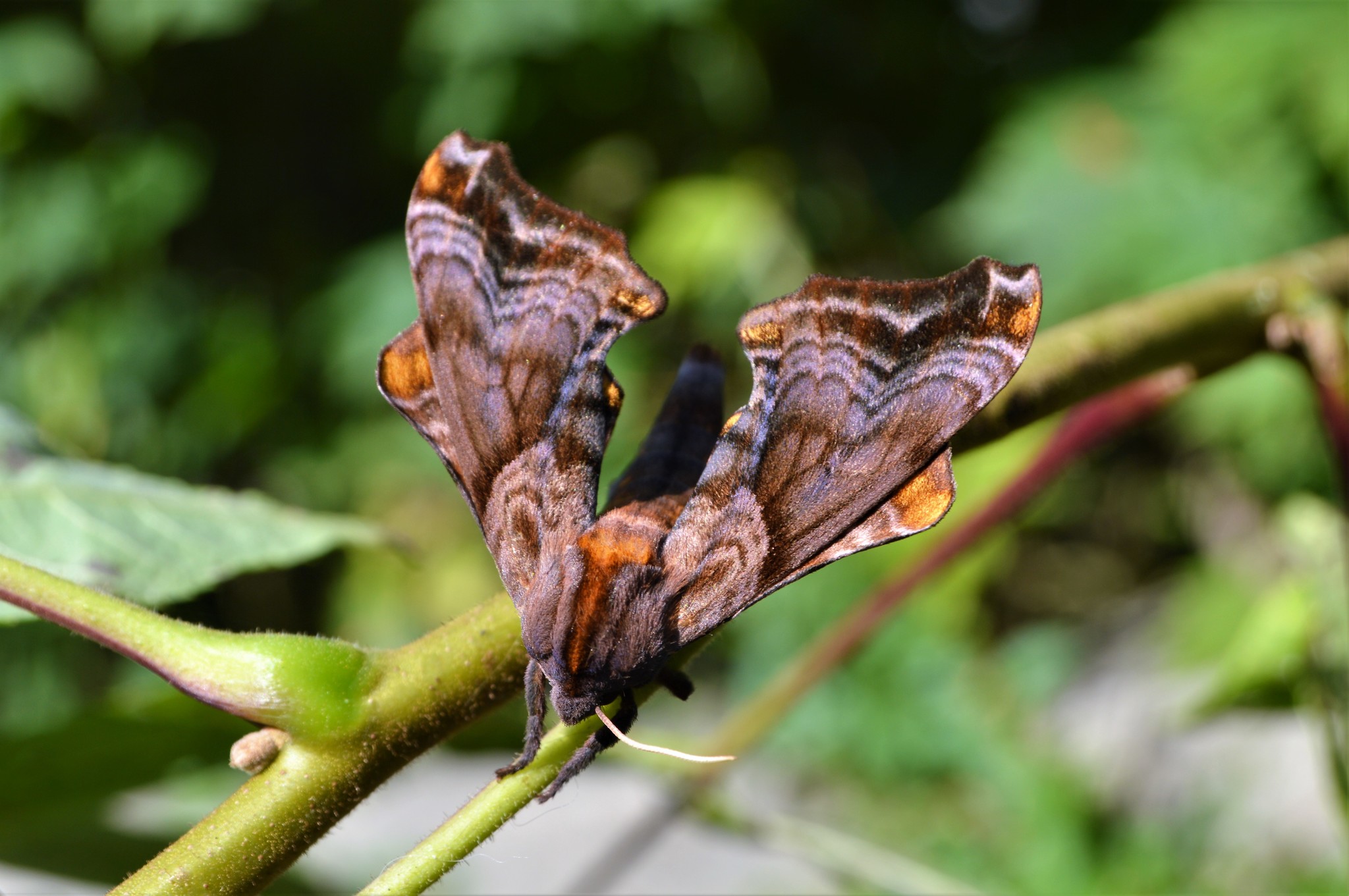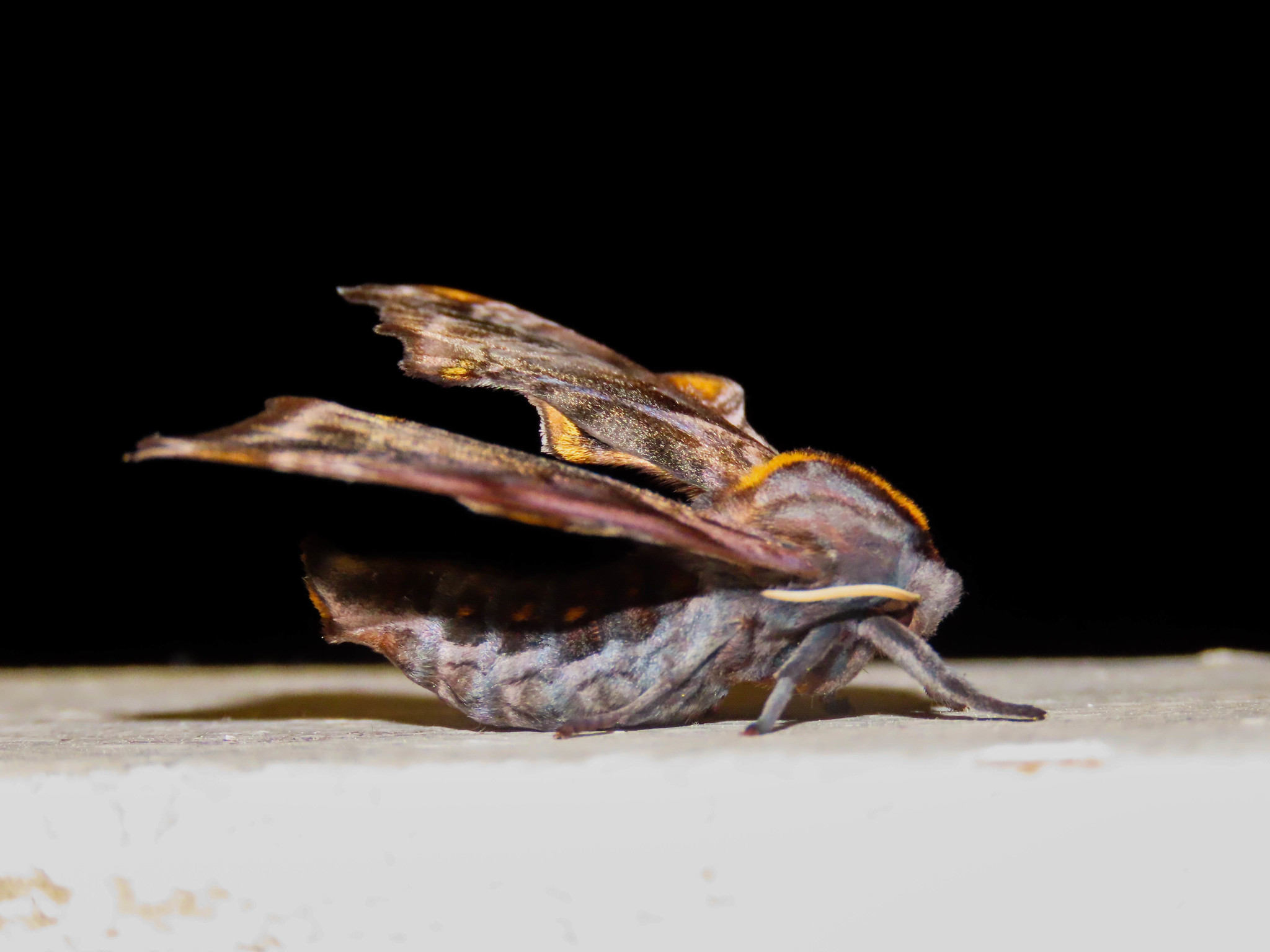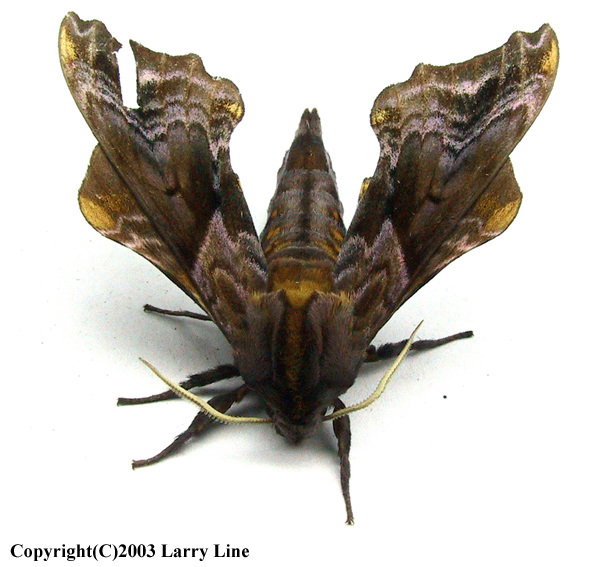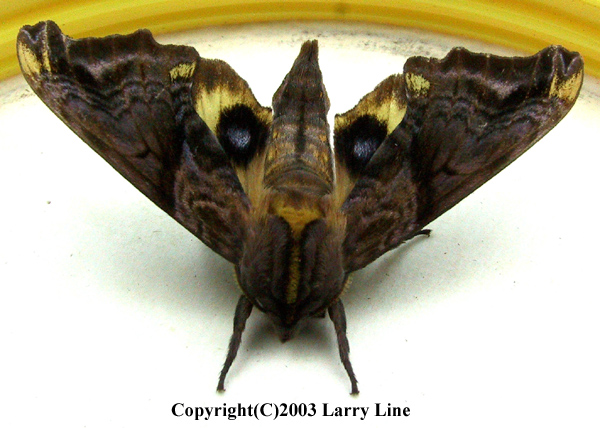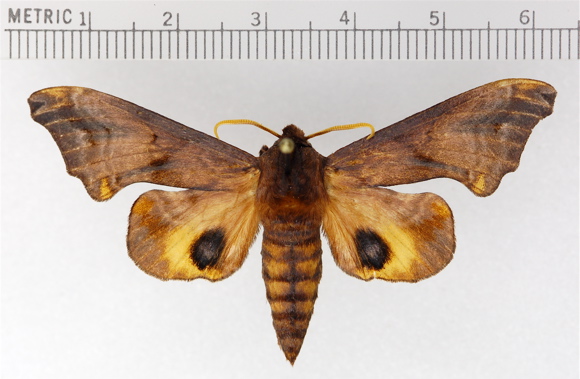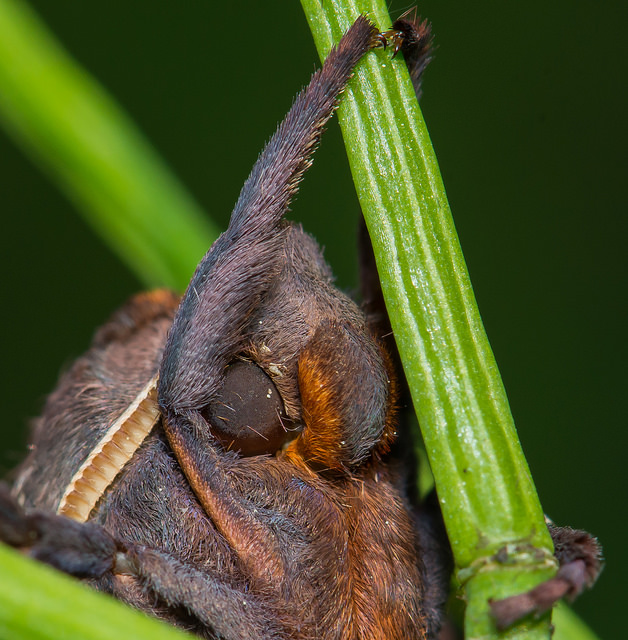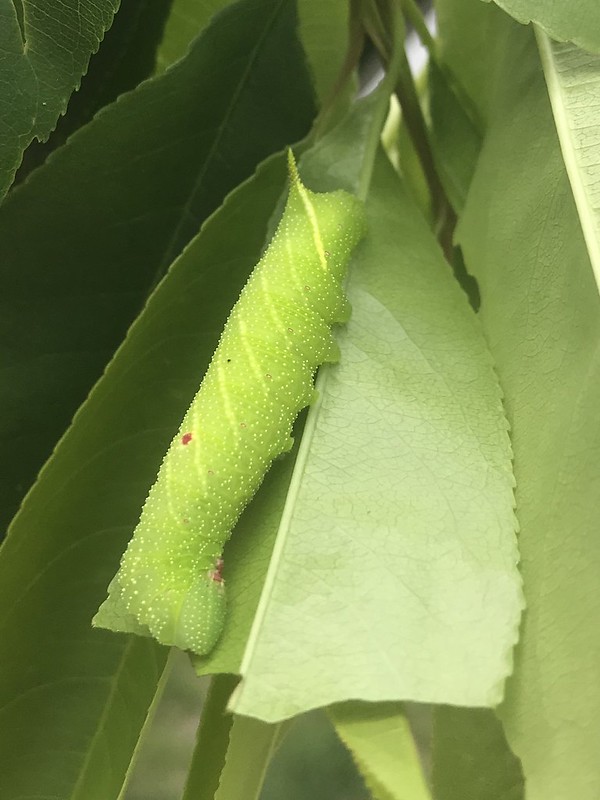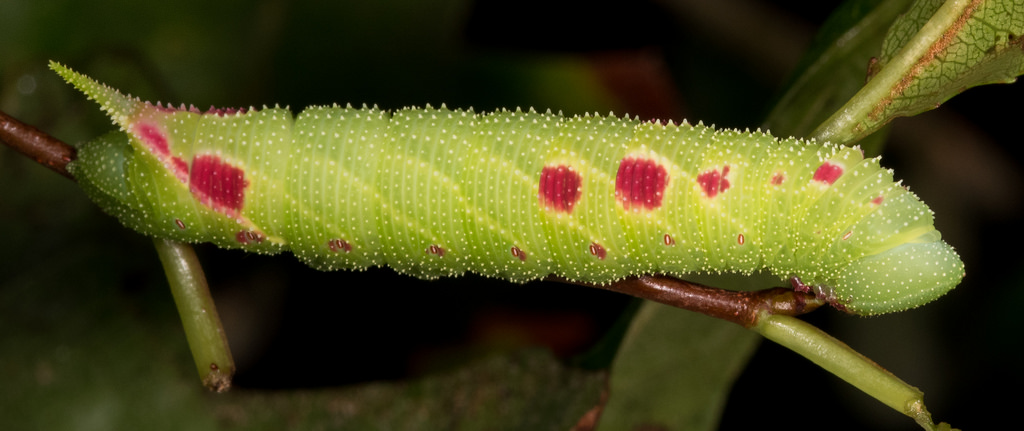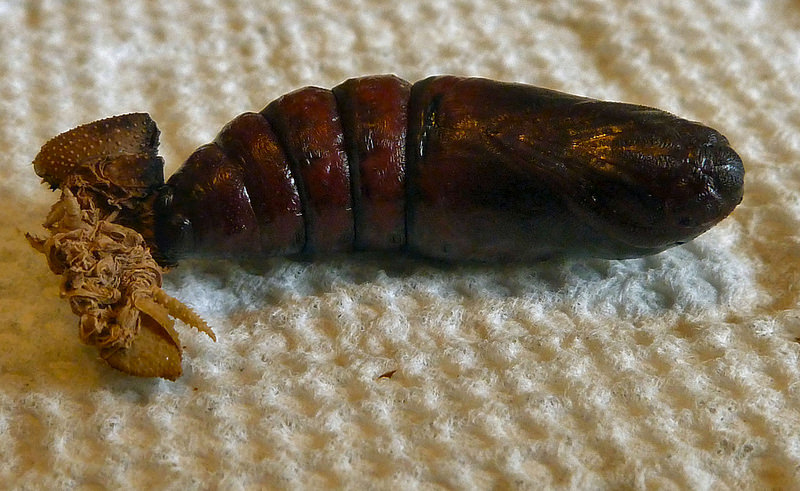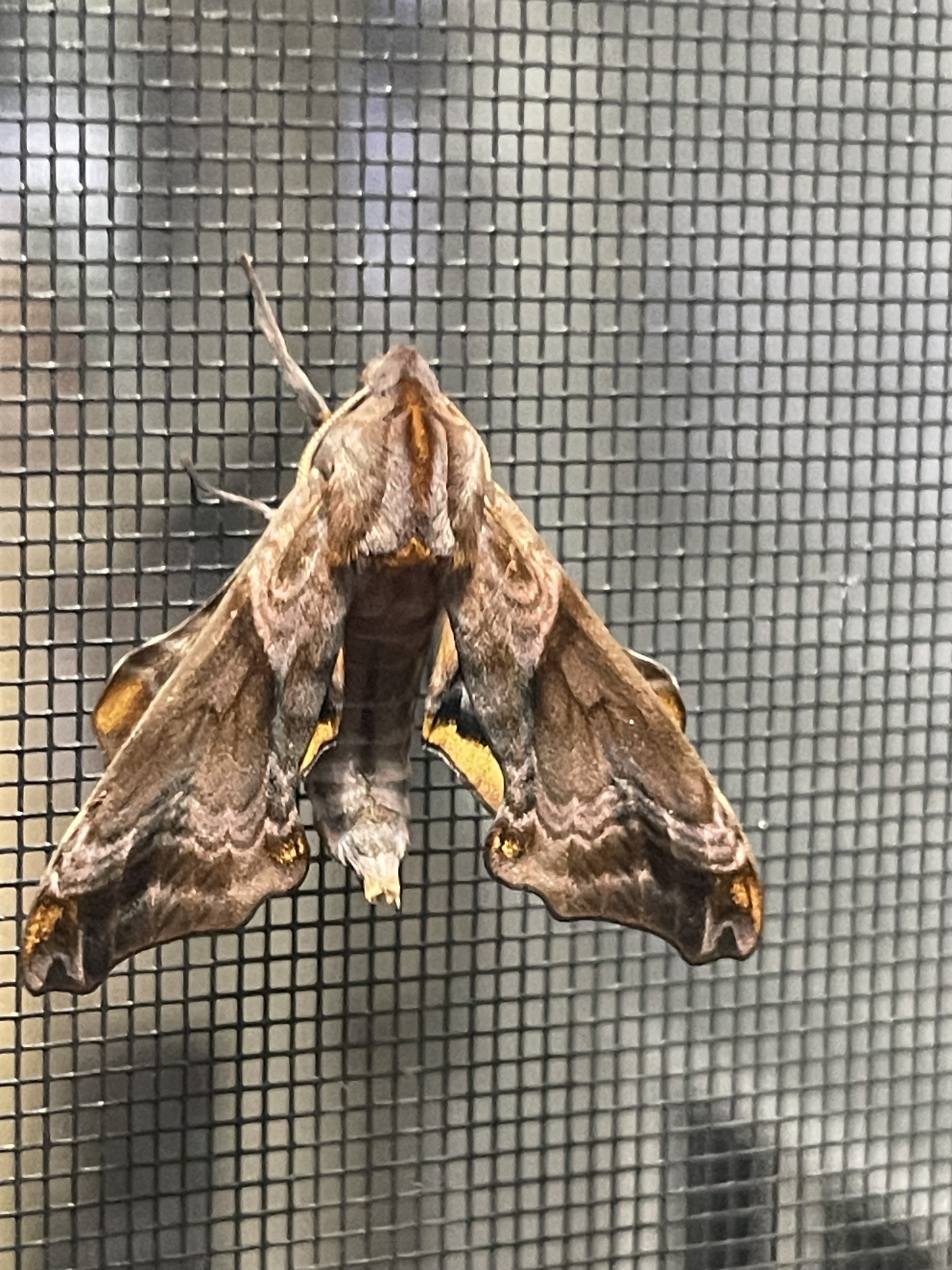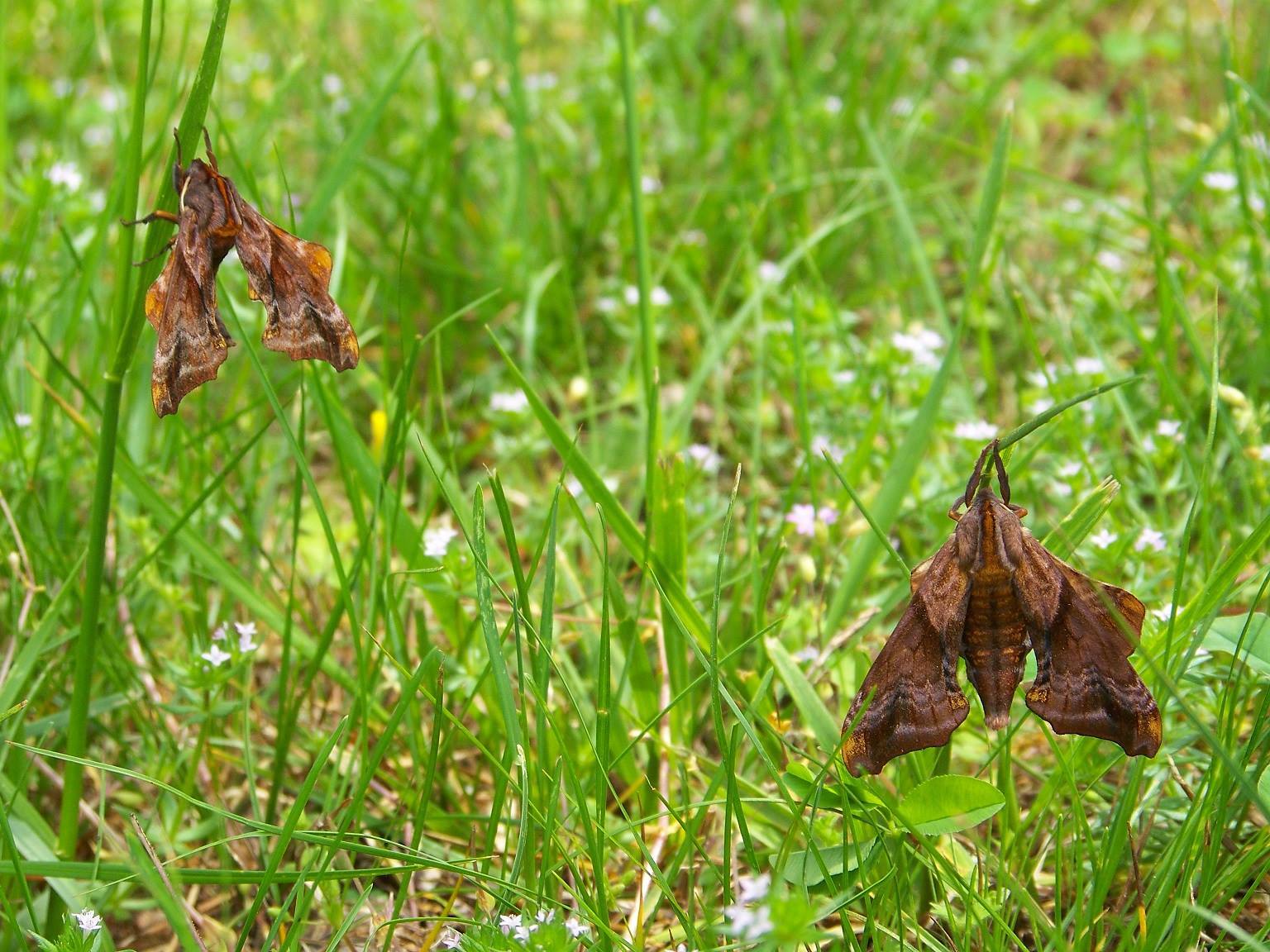Map Snapshot






















292 Records
Relationships
Most sources say that the Small-eyed Sphinx is a generalist, but in Maryland, our data shows that caterpillars are mostly found on trees in the genus Prunus, especially Black Cherry.
Seasonality Snapshot
Use of media featured on Maryland Biodiversity Project is only permitted with express permission of the photographer.
A Small-eyed Sphinx in Anne Arundel County, MD (3/22/2011)..
View Record Details
Media by
David Illig.
A Small-eyed Sphinx in Carroll Co., Maryland (7/25/2014).
View Record Details
Media by
Anna Letaw.
A Small-eyed Sphinx in Worcester Co., Maryland (8/16/2013).
View Record Details
Media by
Scott Housten.
A Small-eyed Sphinx in Howard Co., Maryland (5/18/2015).
View Record Details
Media by
Bonnie Ott.
A Small-eyed Sphinx in Frederick Co., Maryland (6/20/2016).
View Record Details
Media by
Mark Etheridge.
A Small-eyed Sphinx in Cecil Co., Maryland (7/10/2017).
View Record Details
Media by
Shannon Schade.
A Small-eyed Sphinx in Frederick Co., Maryland (8/15/2019).
View Record Details
Media by
Mark Etheridge.
A Small-eyed Sphinx at Rocky Gap State Park in Allegany Co., Maryland (6/27/2015).
View Record Details
Media by
Ashley Bradford.
A Small-eyed Sphinx in Howard Co., Maryland (7/5/2005).
View Record Details
Media by
Nancy Magnusson.
Small-eyed Sphinx in Anne Arundel Co., Maryland (5/19/2023). (c) Timothy Reichard, all rights reserved.
View Record Details
Media by
Timothy Reichard.
Small-eyed Sphinx in Anne Arundel Co., Maryland (8/2/2021). (c) Timothy Reichard, all rights reserved.
View Record Details
Media by
Timothy Reichard.
Small-eyed Sphinx in Garrett Co., Maryland (6/10/2023). (c) Stephen John Davies, some rights reserved (CC BY-NC).
View Record Details
Media by
Stephen John Davies via iNaturalist.
A Small-eyed Sphinx in Worcester Co., Maryland (8/17/2013).
View Record Details
Media by
Scott Housten.
Small-eyed Sphinx in Allegany Co., Maryland (8/4/2019). (c) Kayleigh Parsons, some rights reserved (CC BY-NC).
View Record Details
Media by
Kayleigh Parsons via iNaturalist.
A Small-eyed Sphinx in Harford Co., Maryland (8/26/2020).
View Record Details
Media by
Dave Webb.
Small-eyed Sphinx in Anne Arundel Co., Maryland (9/4/2022). (c) Timothy Reichard, all rights reserved.
View Record Details
Media by
Timothy Reichard.
Small-eyed Sphinx in Allegany Co., Maryland (8/4/2019). (c) Kayleigh Parsons, some rights reserved (CC BY-NC).
View Record Details
Media by
Kayleigh Parsons via iNaturalist.
Small-eyed Sphinx in Garrett Co., Maryland (5/27/2022). (c) Alina Martin, all rights reserved.
View Record Details
Media by
Alina Martin via iNaturalist.
Small-eyed Sphinx in Harford Co., Maryland (Date obscured). (c) Josh Emm, some rights reserved (CC BY-NC).
View Record Details
Media by
Josh Emm.
A Small-eyed Sphinx in Howard Co., Maryland (6/10/2003).
View Record Details
Media by
Larry Line.
A Small-eyed Sphinx in Howard Co., Maryland (6/10/2003).
View Record Details
Media by
Larry Line.
Small-eyed Sphinx moths in Howard Co., Maryland (5/18/2015).
View Record Details
Media by
Bonnie Ott.
A Small-eyed Sphinx in Frederick Co., Maryland (8/9/2002).
View Record Details
Media by
Mark Etheridge.
The eye of a Small-eyed Sphinx in Howard Co., Maryland (5/18/2015).
View Record Details
Media by
Bonnie Ott.
Small-eyed Sphinx in Baltimore Co., Maryland (8/16/2020). (c) synema, some rights reserved (CC BY-NC).
View Record Details
Media by
synema via iNaturalist.
A Small-eyed Sphinx caterpillar in Carroll Co., Maryland (6/16/2020).
View Record Details
Media by
Adam Nickey.
A Small-eyed Sphinx caterpillar in Dorchester Co., Maryland (9/7/2018).
View Record Details
Media by
Mark Etheridge.
A Small-eyed Sphinx larva in St. Mary's Co., Maryland (10/5/2016).
View Record Details
Media by
Bob Cammarata.
A Small-eyed Sphinx caterpillar in Worcester Co., Maryland (10/16/2016).
View Record Details
Media by
Bob Cammarata.
A Small-eyed Sphinx caterpillar in Frederick Co., Maryland (9/13/2015).
View Record Details
Media by
Richard Orr.
Small-eyed Sphinx caterpillar in Carroll Co., Maryland (9/16/2013).
View Record Details
Media by
Anna Letaw.
A Small-eyed Sphinx pupa in Carroll Co., Maryland (7/8/2014).
View Record Details
Media by
Anna Letaw.
Small-eyed Sphinx in Queen Anne's Co., Maryland (8/24/2024). (c) eshoregirlmd, some rights reserved (CC BY-NC).
View Record Details
Media by
eshoregirlmd via iNaturalist.
Small-eyed Sphinx in Wicomico Co., Maryland (4/28/2017). (c) Elaine Parker, some rights reserved (CC BY-NC).
View Record Details
Media by
lurkershadow via iNaturalist.
Source: Wikipedia
| Small-eyed sphinx | |
|---|---|

| |
| Scientific classification | |
| Domain: | Eukaryota |
| Kingdom: | Animalia |
| Phylum: | Arthropoda |
| Class: | Insecta |
| Order: | Lepidoptera |
| Family: | Sphingidae |
| Genus: | Paonias |
| Species: | P. myops
|
| Binomial name | |
| Paonias myops (J. E. Smith, 1797)[1]
| |
| Synonyms | |
| |
Paonias myops, the small-eyed sphinx, is a moth of the family Sphingidae. The species was first described by James Edward Smith in 1797.
Distribution
[edit]It is found from south-eastern Canada to Florida and westward almost to the Pacific Coast.[2] It is also known from Mexico.
Description
[edit]The wingspan is 52–69 mm. Adults are more nocturnal than most sphingids. Adults are on wing from June to September in eastern Canada. In New Jersey, there are two generations per year and there are four generations in Louisiana.
-
Paonias myops ♂
-
Paonias myops ♂ △
-
Paonias myops ♀
-
Paonias myops ♀ △
Subspecies
[edit]- Paonias myops myops
- Paonias myops occidentalis Clark, 1919 (Mexico)
References
[edit]- ^ "CATE Creating a Taxonomic eScience - Sphingidae". Cate-sphingidae.org. Archived from the original on 2012-12-20. Retrieved 2011-11-01.
- ^ "Paonias myops (J. E. Smith, 1797)". Sphingidae of the Americas. Retrieved 2011-11-01.
- Fullard, James H. & Napoleone, Nadia (2001): Diel flight periodicity and the evolution of auditory defences in the Macrolepidoptera. Animal Behaviour 62(2): 349–368. doi:10.1006/anbe.2001.1753 PDF fulltext
External links
[edit]- Lotts, Kelly & Naberhaus, Thomas (2017). "Small-eyed sphinx Paonias myops (J.E. Smith, 1797)". Butterflies and Moths of North America. Retrieved December 19, 2018.
- Midnight racer on National Geographic.
